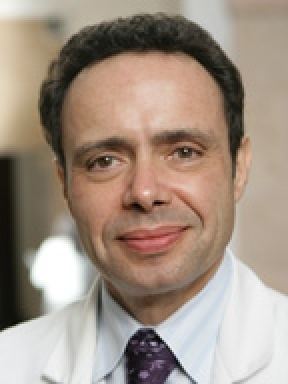Name Y. Gobin | ||
 | ||
Fields Physician & Neurosurgeon Institutions Weill Medical College; New York Presbyterian Medical Center Known for Research in neuroscience & neurosurgery | ||
Dr y pierre gobin on aneurysms stroke and retinoblastoma
Y. Pierre Gobin (born 1957) is a French-born American physician who is an expert in the field of interventional neuroradiology and a pioneer in endovascular treatment of cerebral aneurysms. He is one of the inventors of the Concentric MERCI Retriever, a device for removing blood clots in the brain that cause stroke. He is also one of the developers of intra-arterial chemotherapy for the treatment of retinoblastoma, a rare genetic cancer that affects the eyes of babies and children who inherit it.
Contents
- Dr y pierre gobin on aneurysms stroke and retinoblastoma
- Academic and clinical appointments
- Early life
- Education
- Professional history
- References

Academic and clinical appointments
Gobin is the director of Interventional Neuroradiology at New York-Presbyterian Hospital Weill Cornell Medical Center and professor of radiology in neurological surgery at Weill Cornell Medical College.
Early life
Gobin was born in Paris in 1957 and grew up in the countryside outside Paris. He returned Paris to attend medical school.
Education
Gobin completed his medical degree, internship and radiology residency at the University of Paris, France in 1988. He trained in interventional neuroradiology at Hospital Lariboisiere in Paris, where he performed the first Guglielmi Detachable Coil (GDC) embolization in France, in a patient with a cerebral aneurysm.
Professional history
Gobin came to the United States in 1992, when he was recruited by the Division of Interventional Neuroradiology of the University of California at Los Angeles (UCLA) based on his experience with GDC embolization, which had been invented at UCLA. He was on the faculty at UCLA for nine years, during which time he continued clinical evaluation of GDC technology.
At UCLA, Gobin was part of the team that invented an new device to remove blood clots from the brain, which cause ischemic stroke. The device was conceived in 1995 after a frustrating experience in the operating room in which surgeons were unable to reopen a blood vessel blocked by a clot. In 1999 Gobin became Medical Director of the newly founded Concentric Medical, where he continued his development of the device. In 2001 the first patient was restored to health when a blood clot was successfully removed during a clinical trial. The device, which by then had been named the Mechanical Embolus Removal in Cerebral Ischemia, or MERCI for short, received FDA approval in 2004.
In 2001, Gobin became professor of radiology in neurosurgery and neurology at the Weill Cornell Medical College and director of Interventional Neuroradiology at the New York-Presbyterian Hospital Weill Cornell Medical Center. At Weill Cornell, Gobin teamed up with Dr. David H. Abramson, chief of ophthalmic oncology at nearby Memorial Sloan-Kettering Cancer Center, to develop an innovative treatment using intra-arterial chemotherapy, or "chemosurgery," to treat retinoblastoma. In this procedure, Gobin injects a drug directly into the eye's artery, allowing a far greater concentration of chemotherapy than possible with IV methods, in which only 1 percent of the drug actually reaches the eye. Gobin's procedure is credited with saving the life of Tatum Fisher, the 10-month-old daughter of Utah Jazz point guard Derek Fisher. The procedure is expected to become the standard treatment for retinoblastoma, replacing the eye removal that is the current treatment.
Gobin is the author of more than 100 articles and reviews pertaining to interventional neuroradiology.
In addition to the life-saving procedure he performed on Tatum Fisher, Gobin also repaired the brain aneurysm of rock musician Neil Young.
